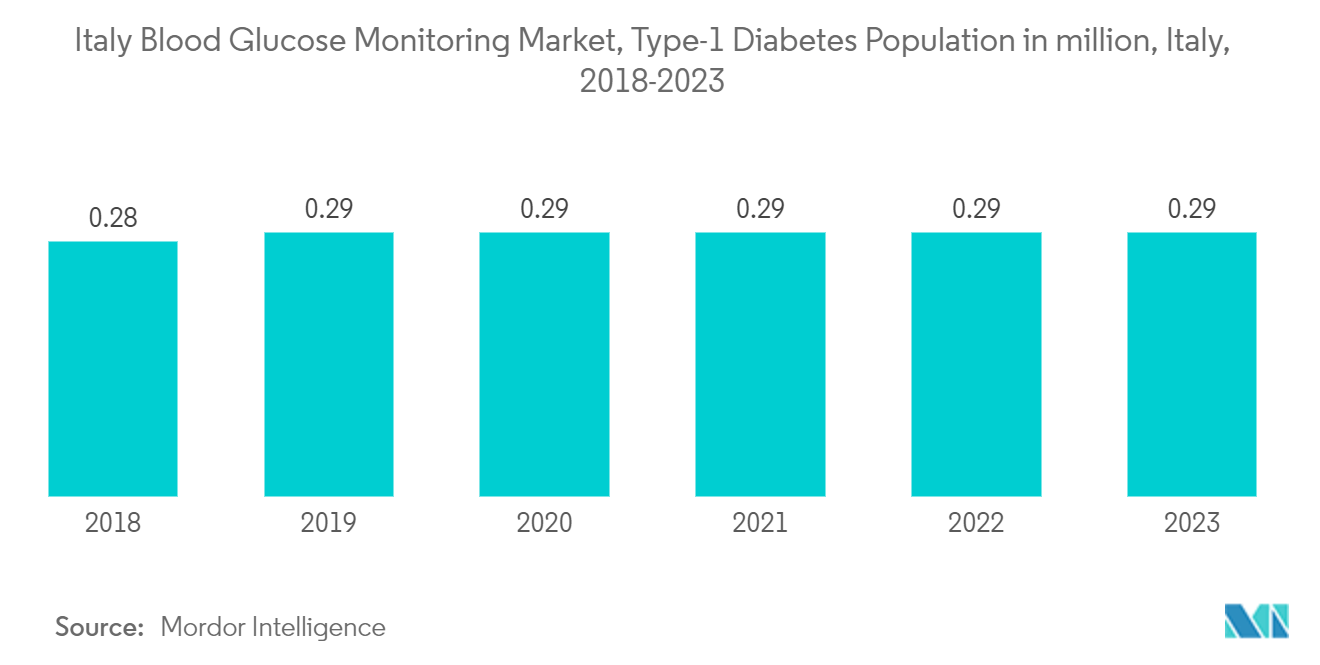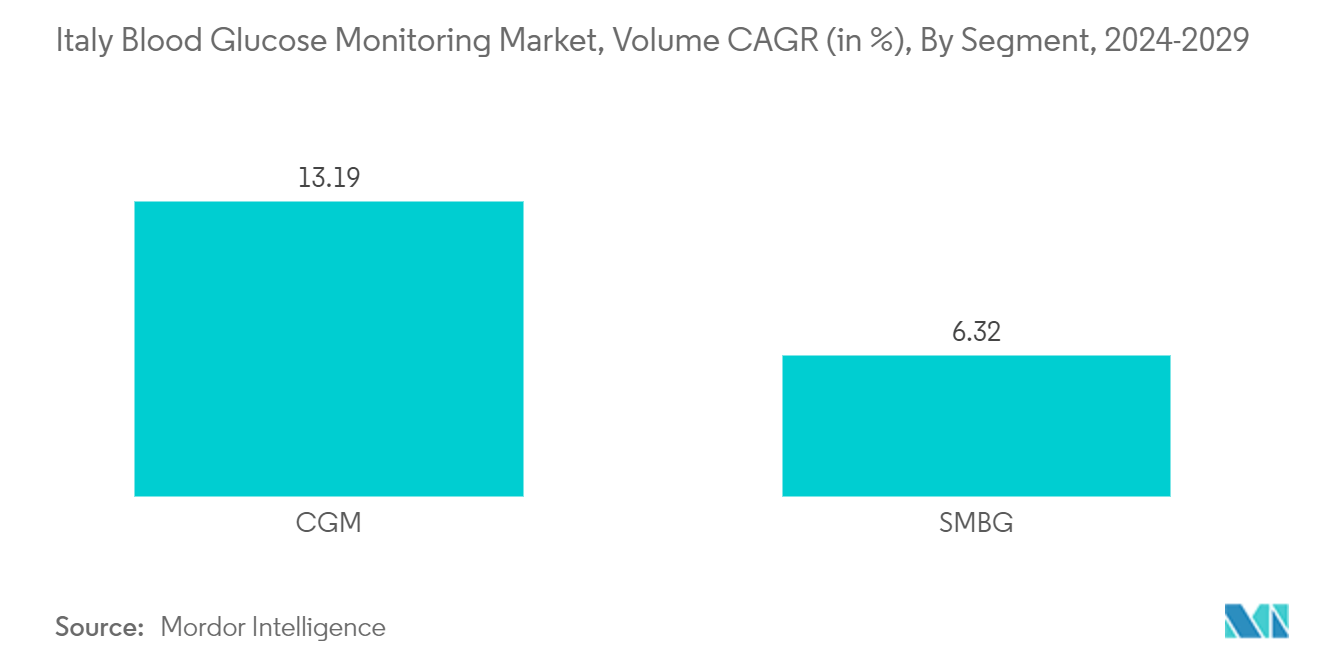Market Trends of Italy Blood Glucose Monitoring Industry
Increasing Type-1 diabetes population across Italy
Diabetes mellitus affected nearly 3.8 million Italians in the current year. This was a significant increase from 2010 when 2.9 million people were affected by the disease. Over the ten years under consideration, the number of cases fluctuated along a general upward trend before peaking in 2022. The number of cases was proportional to the age of the patients. Diabetes was, in fact, much more common among the elderly than among the younger.
Diabetes mellitus will affect approximately 1.9 million people aged 65 to 74 and approximately 1.6 million aged 75 and up in Italy in 2022. Diabetes poses several challenges for both the NHS and Italian society. The greatest challenge is the rising prevalence of diabetes, which poses real health and economic threat to the Italian health system in the future. Prevalence has steadily increased over the last decade and is expected to rise further. It has been stated that if prevalence continues to rise at this rate, the future impact on society and the economy will be unsustainable.
The aging population and rising obesity are major contributors to rising prevalence. If an aging population is difficult. Obesity has increased in recent years, as evidenced by the AMD Annals, owing primarily to unhealthy lifestyle choices such as poor diet and insufficient physical activity. Obesity is so closely linked to diabetes that the two conditions have been dubbed "diabesity controlling." Meeting the demand for diabetes care is becoming increasingly difficult as diabetes prevalence rises, with diabetes centers struggling to care for an increasing number of diabetic patients even though diabetes centers are geographically distributed evenly.
About 10% of the Italian population has diabetes as of 2022. The rate of newly diagnosed Type 1 and Type 2 diabetes cases is seen to increase, mainly due to obesity, unhealthy diet, and physical inactivity. The rapidly increasing incidence and prevalence of diabetic patients and healthcare expenditure are indications of the increasing usage of diabetic care products.
In May 2022, the World Health Assembly agreed on a Resolution on strengthening the prevention and control of diabetes. It recommends action in areas including increasing access to insulin, promoting convergence and harmonization of regulatory requirements for insulin and other medicines and health products for the treatment of diabetes, and assessing the feasibility and potential value of establishing a web-based tool to share information relevant to the transparency of markets for diabetes medicines and health products.

Continuous Glucose Monitoring Holds Highest CAGR in Italy Blood Glucose Monitoring Market.
The COVID-19 pandemic emphasized the need for good glycemic control in patients with diabetes, largely because most observational studies have reported that poorly controlled diabetes is associated with a higher risk of hospitalization and death from a viral illness. The frequency of monitoring glucose levels depends on the type of diabetes, which varies from patient to patient. Type-1 diabetic patients need to check their blood glucose levels regularly to monitor their blood glucose levels and adjust the insulin dosing accordingly.
The current CGM devices show a detailed representation of blood glucose patterns and tendencies compared to a routine check of glucose levels at set intervals. Furthermore, the current continuous glucose monitoring devices can either retrospectively display the trends in blood glucose levels by downloading the data or give a real-time picture of glucose levels through receiver displays.
The use of CGM by Type-1 diabetic patients is very less as compared to Type-2 diabetic patients. But the expenditure of Type-1 diabetic patients on these devices is nearly double that of Type-2 diabetics. The newest CGM models, the Abbott Freestyle Libre and the Dexcom G6, overcame many technical barriers. However, high costs and uncertainties about their efficacy and necessity have kept CGM from being widely used by people with Type-2 diabetes. Continuous glucose monitoring devices are becoming cheaper with new technologies, like cell phone integration.


